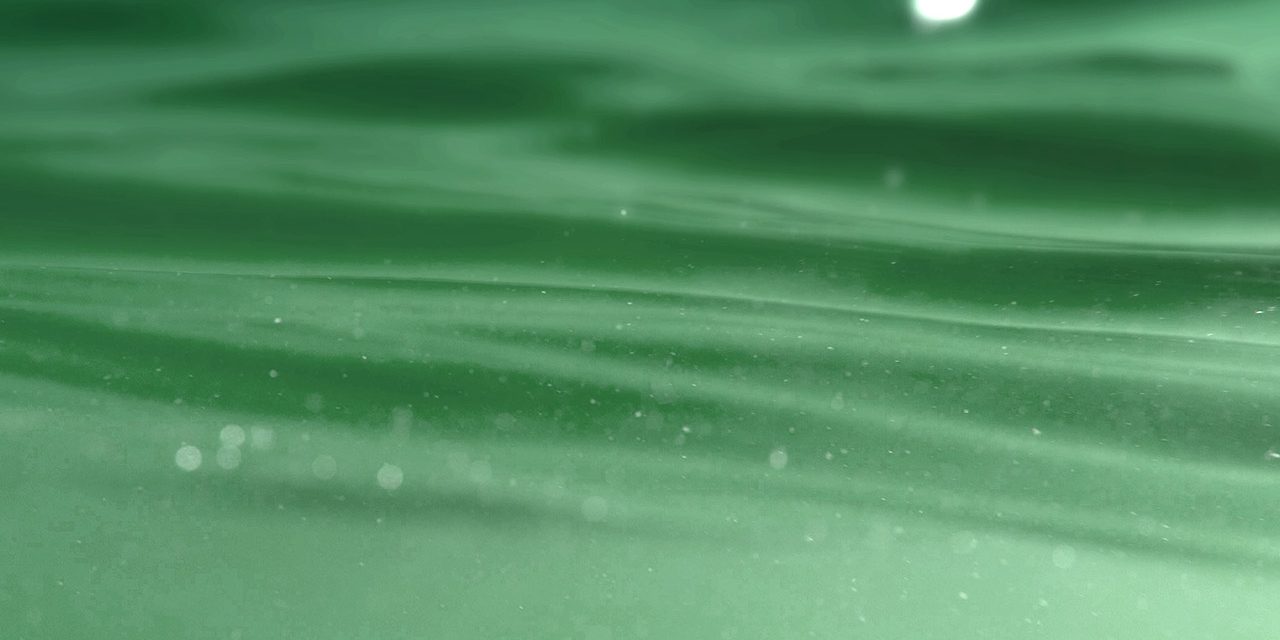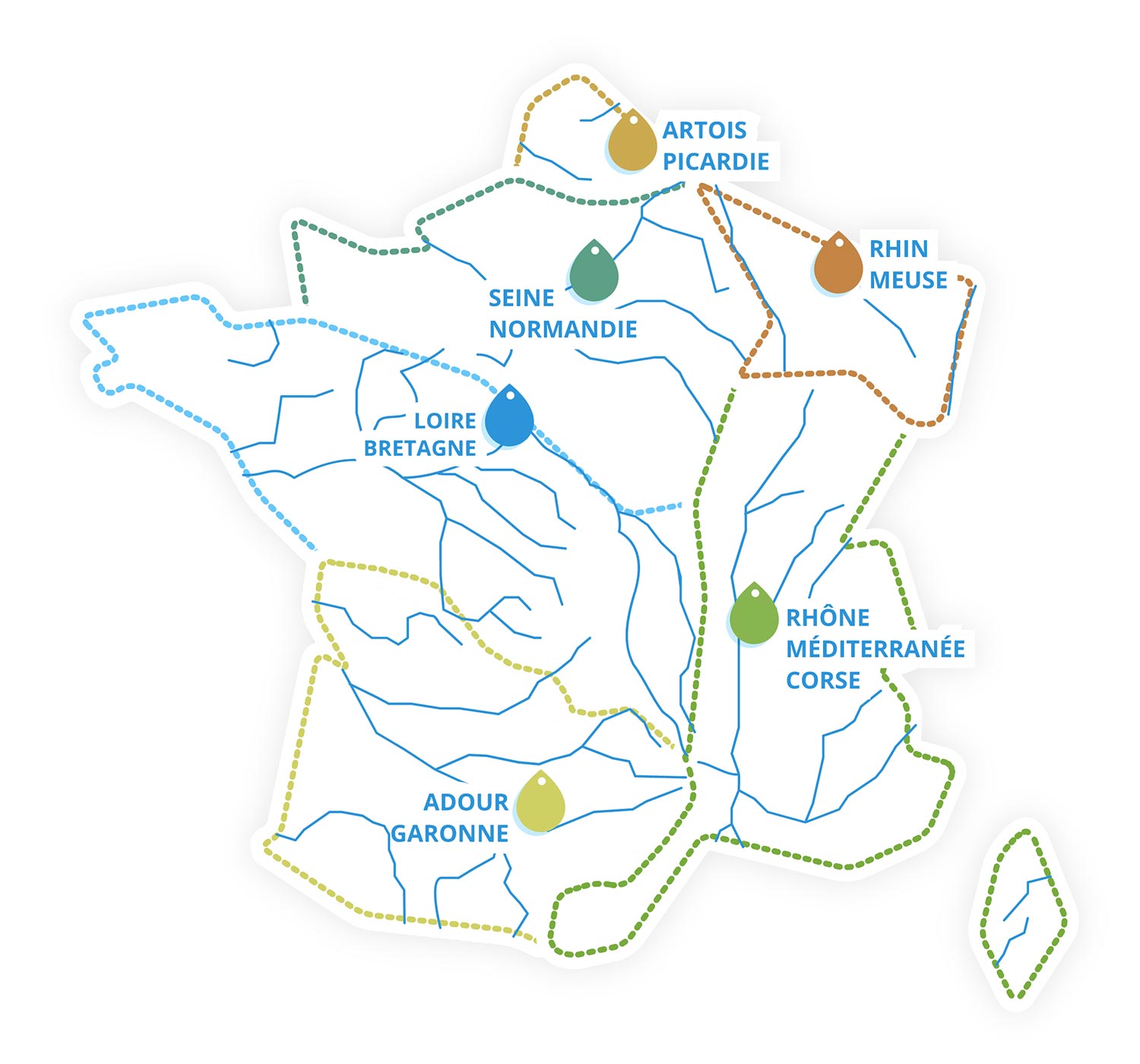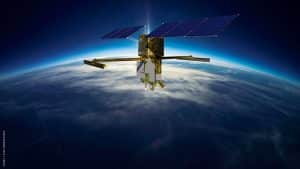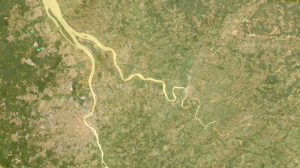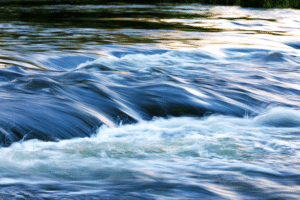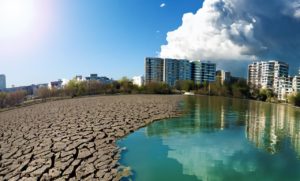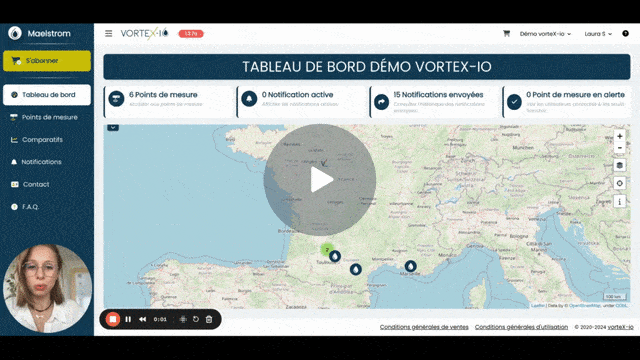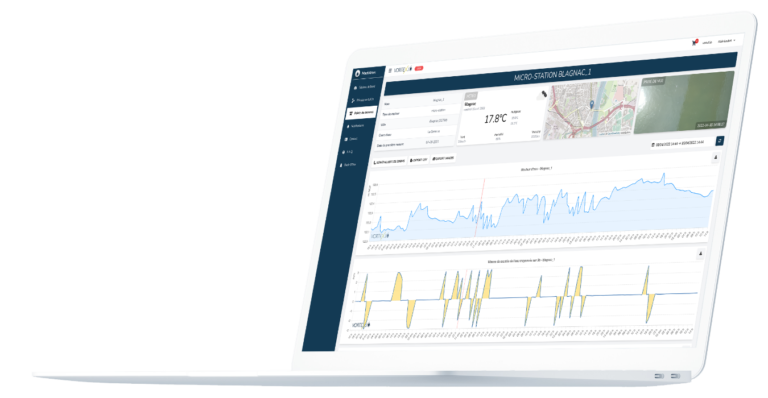Today we want to highlight an important R&D project that vorteX-io has been carrying out since the end of 2022 on behalf of the French Adour-Garonne Water Agency and in collaboration with the CNES and the OFB (French Office for Biodiversity).
The objective of this exciting environmental research and development project is to develop innovative methods for remotly measuring the water quality of rivers and hydrological networks.
We are very pleased to announce that future micro-stations in the vorteX-io network will be equipped with unprecedented features that allow them to remotely and in real-time measure two essential parameters for water quality:
– surface temperature
– turbidity
Stream temperature measurement
Among the various metrics measured in the field of water quality, water temperature is one of the most important. It is indeed a key factor in the habitat and metabolism of aquatic species and thus in the biodiversity of wetlands in general. Some aquatic organisms have specific temperature requirements for reproduction and even survival. As such, an increase in temperature can directly affect their growth and development and, by extension, weaken entire sections of the food chain in these fragile ecosystems.
Water temperature also has a significant impact on the amount of dissolved gas in the water. In general, the higher the temperature of the water, the less able it is to dissolve gases. A watercourse can thus undergo a drastic decrease in the dissolved oxygen content in its waters, which can have harmful consequences on the aquatic fauna and flora.
Moreover, water temperature is an important variable for both agriculture and industry, and even in the energy sector.
In this regard, power/nuclear plants, for example, use large quantities of water to cool their equipment. The temperature of the incoming water and the temperature of the discharged one are therefore a major factor in this process and can have a significant impact in terms of nuclear safety.
Close monitoring of temperature variations in rivers and lakes also allows the detection of potential sources of pollution.
Finally, on a larger scale, this metric is one of the key indicators for assessing the impacts of climate change on continental aquatic ecosystems.
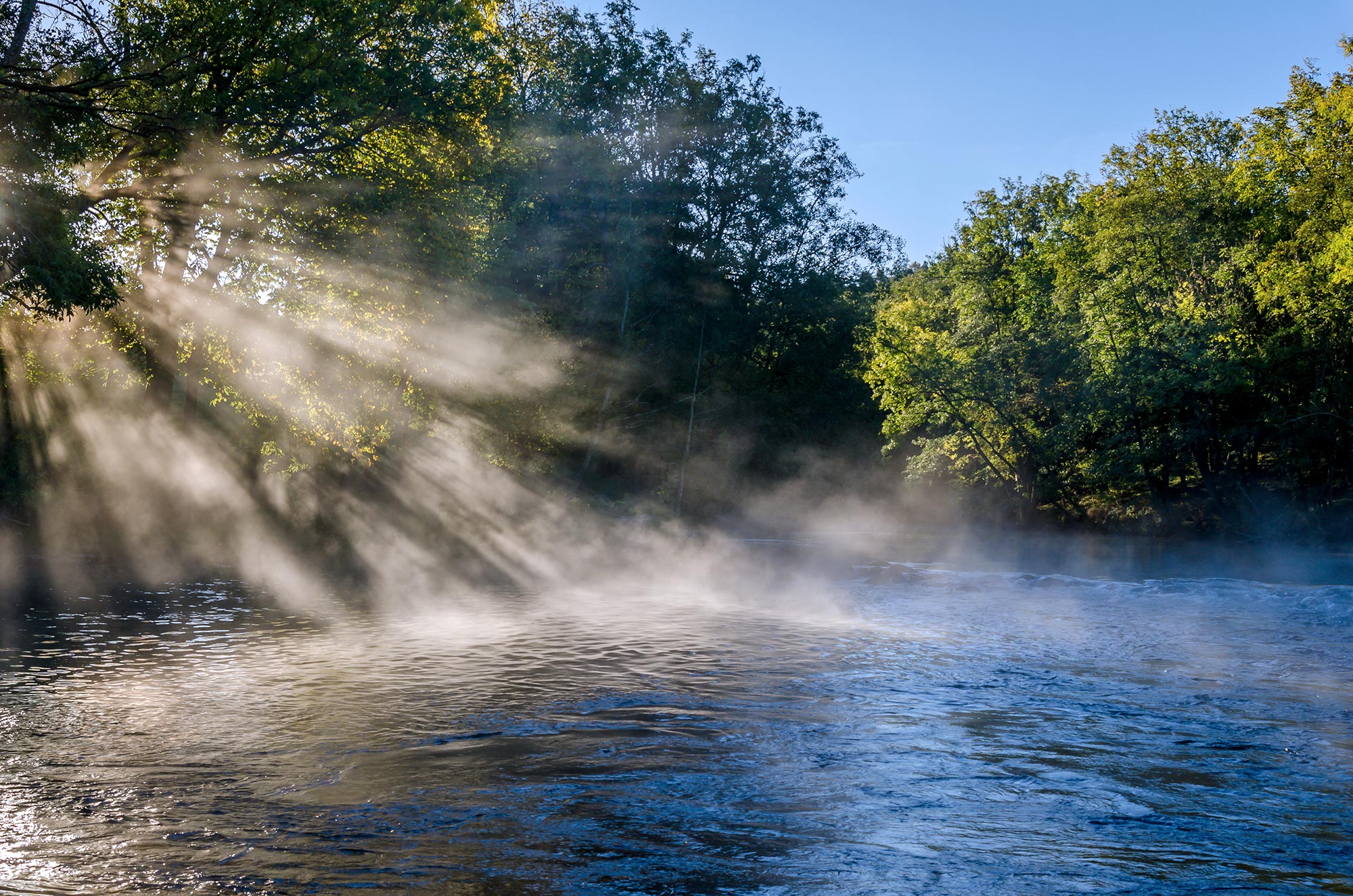
Turbidity measurement
The turbidity of a liquid refers to the presence of undissolved matter in suspension that affects its transparency.
In a watercourse, suspended particles can be either of natural origin (sediments, algae, organic matter, etc.) or of anthropogenic origin (chemical pollutants, waste, etc.). That’s why an increase in turbidity can be an important indicator of water quality degradation.
The amount of suspended matter in water can have a direct impact on human health as high levels of turbidity can be associated with health risks, such as waterborne diseases. Turbidity measurement allows the detection of human health risks related to the consumption ofpotentially contaminated water (bacteria, viruses, parasites and toxic chemicals).
Furthermore, episodes of flooding and drought have a direct influence on the turbidity levels of a watercourse. During a flood, high flows bring with them large amounts of sediment, organic matter and soil from the riverbed, banks and submerged lands.
On the other hand, in the case of an acute drought episode, especially during heat waves, when water evaporates due to heat, the suspended matter particles become concentrated in the small remaining amount of water. In some cases, turbidity can then rise exponentially.
Turbidity is an important parameter for many applications, especially for drinking water treatment and industrial and municipal effluent monitoring. By measuring turbidity, fluctuations in water quality can be detected early and action taken to protect the environment and human health.
In the coming weeks, and still within the framework of the contract that binds us to the Adour-Garonne Water Agency, a second series of tests will be carried out to measure turbidity by remote sensing as well. This will be the second metric measured by the future versions of our micro-stations.
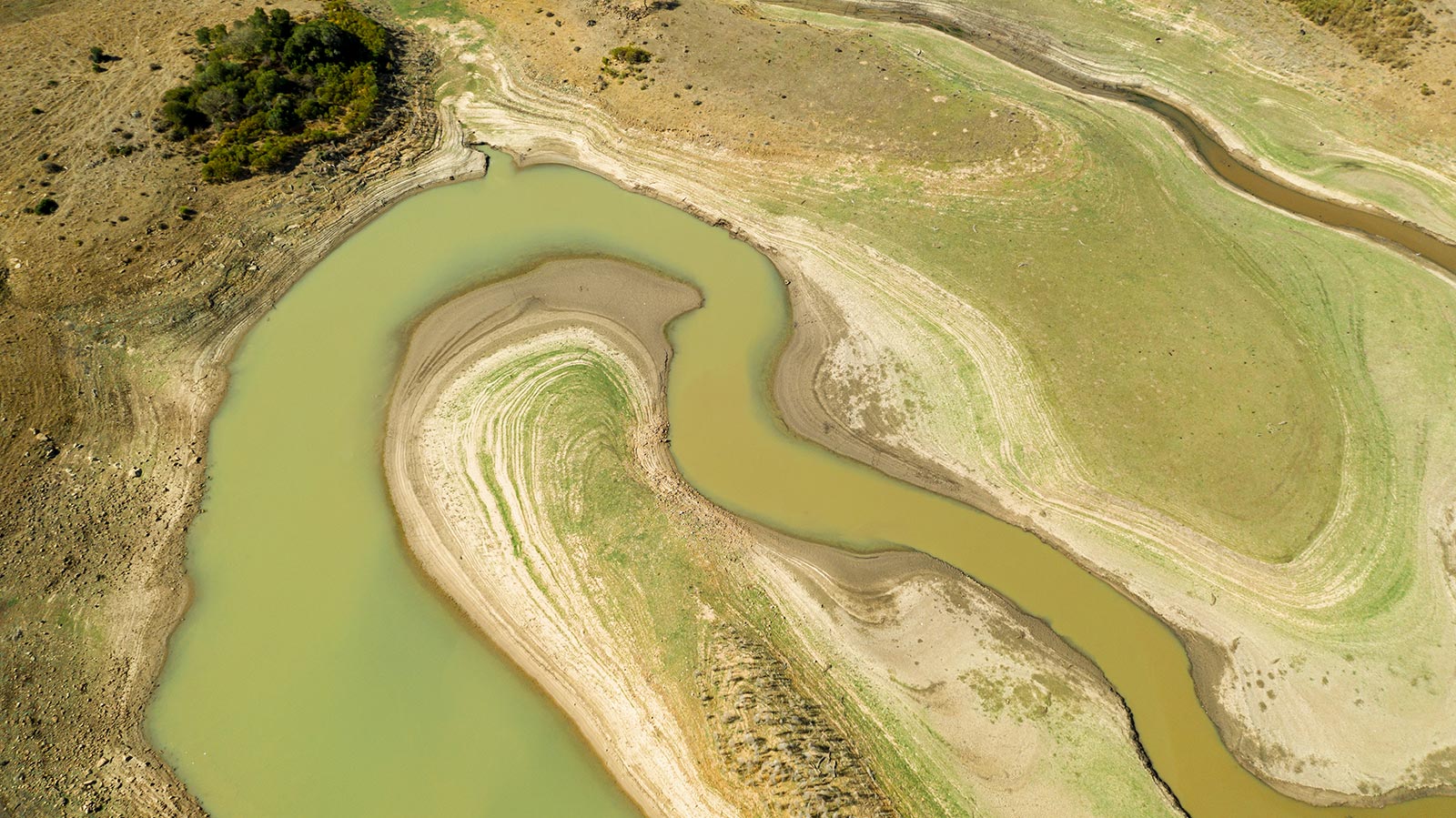
Water agencies and water quality measurement in France
In France, the measurement of water quality in rivers is mainly carried out by the 6 water agencies, which are public institutions in charge of water resource management.
The water agencies oversee the water quality measurement network, which includes:
–field measurements
– automated measuring stations
© www.lesagencesdeleau.fr
During field measurements, water samples are manually collected and then analyzed in a laboratory.
Automated measuring stations are equipped with sensors that continuously measure parameters such as temperature, turbidity, pH, etc.
The data is then automatically transmitted to the water agencies.
These water quality data are used to assess the condition of streams, track trends, identify areas at risk, and guide actions to protect and restore aquatic environments.
Unfortunately, although essential, measuring the water quality of rivers requires a lot of human time for manual sampling and is extremely costly in terms of automated sampling equipment.
It should be noted that while submerged devices (probes, stations) are highly effective, they are also by definition particularly exposed to the vagaries of watercourses. Flood events, severe weather, impacts caused by driftwood, ice, etc. are all causes of failures and drift in the quality of the data collected.
This is why thescale of the human and financial resources required to ensure their maintenance weighs heavily on the budget of the french water agencies in charge of these measures.
The cost of the equipment, its installation and maintenance can largely explain why the number of sensors currently deployed on the French territory does not exceed 800.
The vorteX-io approach: remote sensing
In contrast to these immersed sensors, vorteX-io’s idea is to develop its network of hydrological micro-stations, mainly installed on bridges spanning rivers, towards new functionalities.
In addition to the measurements already carried out (water height, surface velocity, image/video capture), the vorteX-io micro-stations will soon be able to measure the surface temperature as well as the turbidity of the water.
As micro-stations are located several meters above the water, they are by definition sheltered from the hazards suffered by submerged collectors. As the measurements are made at a distance from the water, it is called remote sensing.
Another major advantage of vorteX-io micro-stations is their low cost, as they require virtually no maintenance. Actually, thanks to their unique design, directly inherited from the space domain, their vital constants are automatically monitored, remotely and in real time. Once installed, no human intervention is required and their operation is fully automated.
The internal battery is powered by a solar panel. This energy autonomy ensures their long-term internal operation, that of the embedded measuring instruments, but also thetransmission of telemetry and the reception of commands, firmware updates, etc.
The advantages of being located away from the water are numerous, but the downside is that this method excludes the possibility of taking water samples.
Chemical measurements (pH, conductivity, dissolved oxygen, nutrients, metals, bacteria, pesticides, etc.) will therefore remain the prerogative of underwater instruments.
How to measure water quality without being immersed?
Remote sensing of water surface temperature is performed in the thermal infrared range using the sensors embedded in the new version of the vorteX-io micro-station (v.2.1).
The validation of the “vorteX-io measure” in real conditions has been taking place since the beginning of 2023 on the Girou, a small river in Haute-Garonne (in the Southwest of France). The site corresponds to the necessary validation criteria since it was already equipped with operational submerged probes, dedicated to temperature measurement and used by the Adour-Garonne Water Agency. It was the ideal place to compare the measurements made by the two devices.
Remote measurements are more complex than those made with immersed instruments. Thus, one of the problems to be solved in order to obtain reliable measurements with thermal imaging cameras, lies in the fact thatit is necessary to take into account only the water surface. To avoid that the calculations are distorted by the temperature of possible emergent objects (banks, floating obstacles, bridge and other fixed structures …), a “software mask” must be applied to keep only the parts of the image that correspond to the water.
By applying to the images a Deep Learning algorithm specially developed by our R&D team, and applied to the optical images, we can concentrate the measurements only on the water surface.
An average calculation is then applied to obtain accurate results.
The images below detail the process of creating the “software water masks” used in the surface temperature calculations.
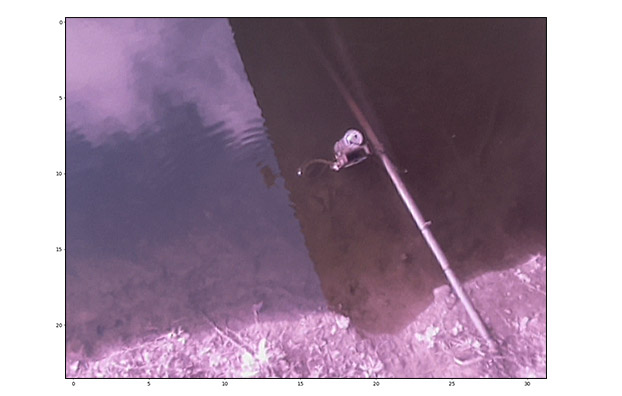
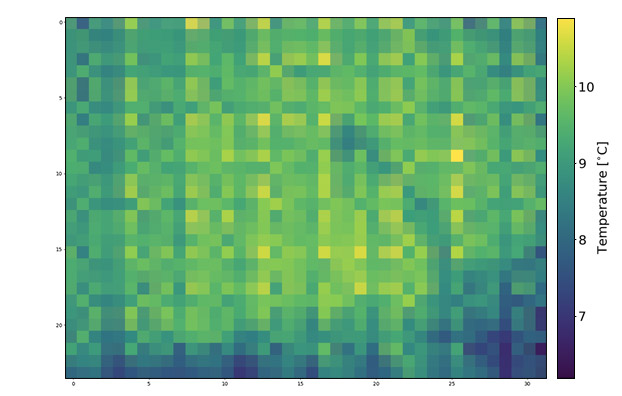
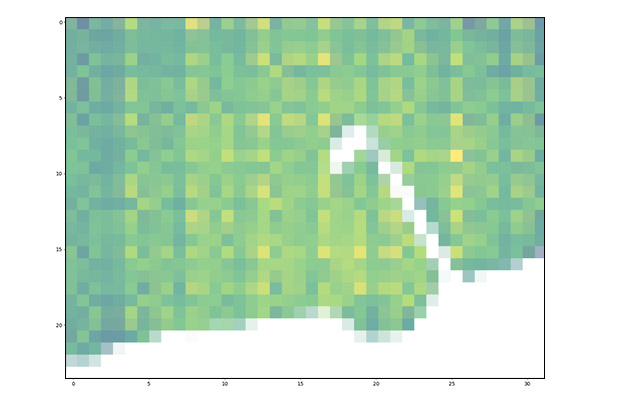
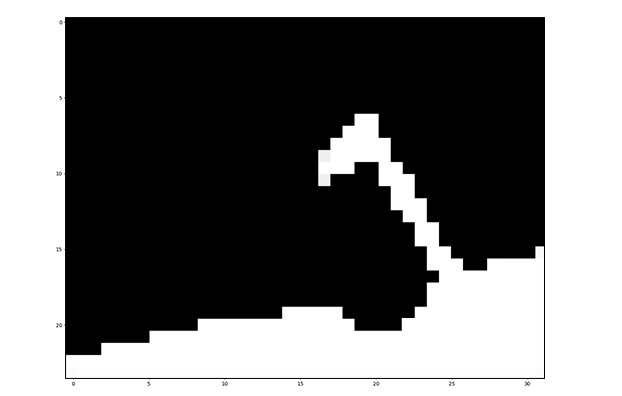
as the scalar field
Conclusion
The results obtained regarding water temperature measurements are already very encouraging. R&D is still underway for the automatic measurement of turbidity by remote sensing and we will present the results shortly.
These innovations will allow for the real-time measurement of surface temperature and turbidity of watercourses at a lower cost and at a scale previously unimaginable.
Already at the forefront of hydrological measurements in terms of quantitative data on rivers, vorteX-io is now preparing to complete the scope of its offer by adding the qualitative dimension. These innovations are part of our goal to create the first hydrological database at the European scale, which can be consulted via Maelstrom®our platform dedicated to hydrology.
Protection of wetland biodiversity, monitoring potential sources of pollution, better management of water resources (consumption and sanitation), evaluation of the impacts of climate change on hydrological systems and ecosystems: the issues related to water quality data are numerous and increasingly relevant.
The vorteX-io Newsletter
Follow the latest news from vorteX-io:
projects & innovations, updates of the Maelstrom® platform, in-depth articles about hydrology...
